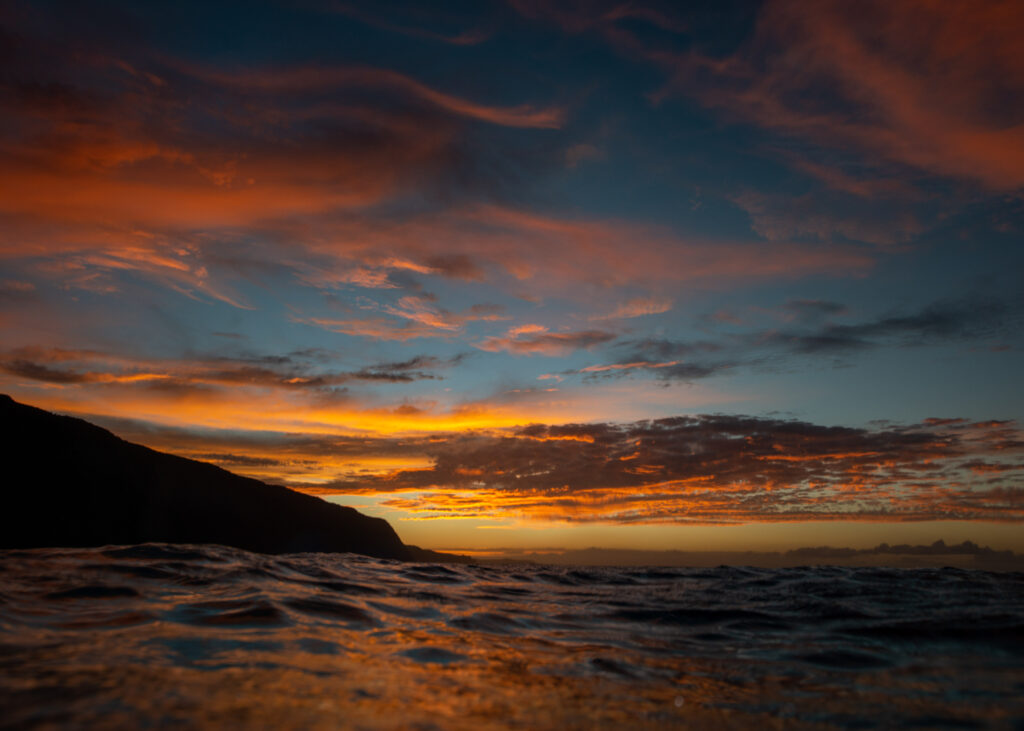
In some way or another, Covid-19 brought isolation into all of our lives. It’s been begrudgingly endured by some, greatly appreciated by others — but entirely unavoidable for everyone. I handled it much like everyone else probably (?) did… with some good days, when I reveled in the quiet comfort of my home, and some bad days, when I stared out the windows of my house feeling as though I was trapped in a fishbowl with my life on pause. Despite all the ups and downs, I hoped that experiencing so many months of pared-down social life would somehow benefit me when I began my internship. After all, I was scheduled to travel to some of the most remote national parks on the map.
Kalaupapa National Historical Park is one of those parks. On the Hawaiian island of Molokai, the Kalaupapa Peninsula sits at the base of a 2,000 ft. sea cliff wall (“pali” in Hawaiian), separating it from the rest of the island. “Topside” Molokai is only accessible from Kalaupapa via boat, aircraft, or a steep 2.5 mile hike or mule ride up the sea cliffs. The history of the area is replete with vibrant Hawaiian culture and beautiful, bountiful land. However, due to its remote geography, Kalaupapa Peninsula’s history also has a dark side — one involving exile, disease, and forced isolation.
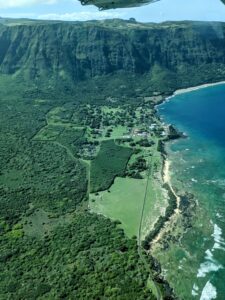
An aerial view of the Kalaupapa settlement.
In the mid 1800s, Hansen’s disease, commonly known as leprosy, spread to the Hawaiian islands. With no treatment for the rapidly spreading disease, King Kamehameha V took drastic measures: the establishment of an isolation site on Kalaupapa Peninsula. Thousands of leprosy patients, primarily native Hawaiians, were ripped away from their lives and banished to the remote peninsula. After being dropped off on the rocky shores, the sick and exiled were left to their own devices. Facilities were minimal, resources were limited, and isolation was never-ending.
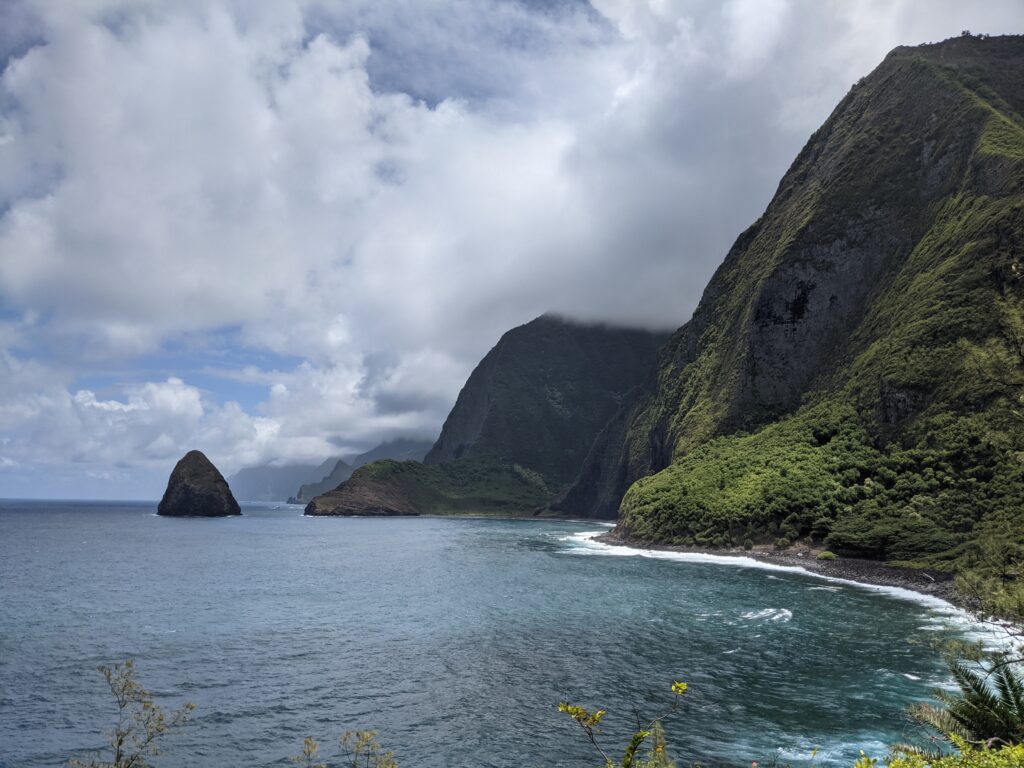
One of Kalaupapa’s iconic viewpoints. This shoreline was where some leprosy patients were dropped off by boats in the mid-1800s.
By 1969, leprosy treatments were developed and patients were no longer contagious. After over 100 years, mandatory isolation laws were lifted and residents could choose whether or not to remain in Kalaupapa, which became a National Historical Park in 1980. Currently, there are less than 10 remaining patients in the Kalaupapa Settlement. State Department of Health and NPS employees make up the rest of the settlement’s population, which is typically around 80-100 residents. However, the park is particularly quiet nowadays, with closer to 35-40 residents. Due to current federal and state Covid regulations, visitors have not been allowed into Kalaupapa for over 18 months, and residents are not allowed to host visiting friends and family. As I packed my bags in the Virgin Islands and prepared to fly to Kalaupapa, I felt lucky to have the opportunity to work in the park, especially in the midst of the pandemic.

The main road from the airport into the Kalaupapa settlement.
—
After a full day of flying, I landed in Honolulu at 6:30 p.m. local time — 12:30 a.m. in the Virgin Islands. Sleep was brief (thanks, jet lag), and I rose early the next morning to start what I expected to be a hectic day. First, I dropped off my bags at a cargo transport company. The planes that fly passengers into Kalaupapa are small Cessnas, so I didn’t want to risk showing up for the flight with my 100+ pounds of luggage and not being able to load everything. After that, I rushed to the other side of town for a Covid test, which was required to enter Kalaupapa Settlement. My last errand before flying into the park was to visit the grocery store. Kalaupapa has a tiny grocery store, but it’s fairly limited and meant for residents only. Stocking up at Safeway before my flight was the best option. At this point in my travels, I was pretty tired of lugging around heavy bags and needed to watch my budget a bit more closely. I stuck to “backpacker style” ingredients in order to keep things light and cheap — beans, rice, tuna packs, you get the idea.
Errands were completed and I caught my flight to Kalaupapa with no issues. I had never been on such a small plane, nor one with so few people — just four humans and one dog. Jet lag was hitting hard, but the excitement I felt as we flew over Oahu and Molokai provided enough of an energy boost to keep me from falling asleep during the short flight. Slowly, the signature green sea cliffs that line the Kalaupapa Peninsula came into view, and I looked on in awe as the plane descended into the park.
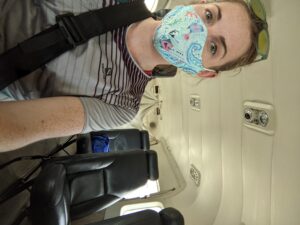
Onboard a Cessna 208 — much smaller than the planes I usually fly in.
When I landed at the airport — a quaint open air shelter and single landing strip — I was greeted by park dive officer / marine ecologist Kelly Moore and biological science technician Glauco Puig-Santana. After thanking them for picking up my three cases of gear and luggage that had been dropped off at the airport earlier, we drove into town to the NPS Natural Resources office. Glauco pointed out some of the buildings as we drove through town — the multiple churches, the patient care facility, and the post office, to name a few (admittedly there aren’t too many more). Once we arrived at the office, we immediately started discussing logistics, rules, and the diving plan for the week.
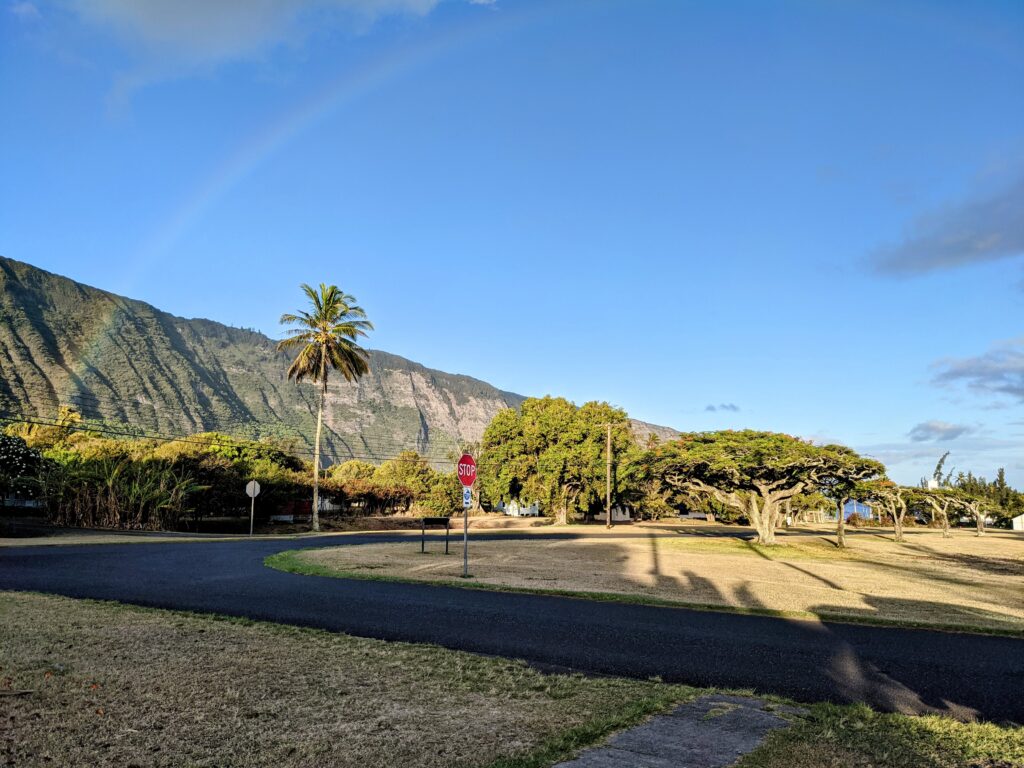
A morning rainbow above town from my front yard.
The first order of business during my stay was to help Kelly and Glauco complete long-term sub-tidal monitoring surveys and water quality sampling of fixed and temporary sites around the peninsula. At each site, we were to first deploy a YSI water quality meter — it would be placed at depth for the first 10 minutes of the sample, then sent to the surface to collect an additional 10 minutes of data. During each dive, we would mark a 25 meter transect with a tape measure and take photos of the benthic substrate at each meter. For temporary sites, an additional rugosity survey needed to be done. This involved laying out a metal chain marked with meter measurements along the transect line and shaping it to the contours of the benthic substrate. If a site had a large number of boulders, that would equate to a higher rugosity measurement than a site that was purely sand or flat rock. Collectively, all of this data helps provide insight into the health of the reefs and water. The data are also used for identifying any significant ecological changes over time.
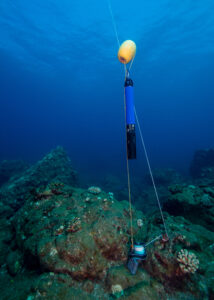
A critical part of surveying involves assessing water quality. This YSI water quality monitor is weighed down at the survey site to collect data at depth, then sent up to the surface to collect a second round of data.
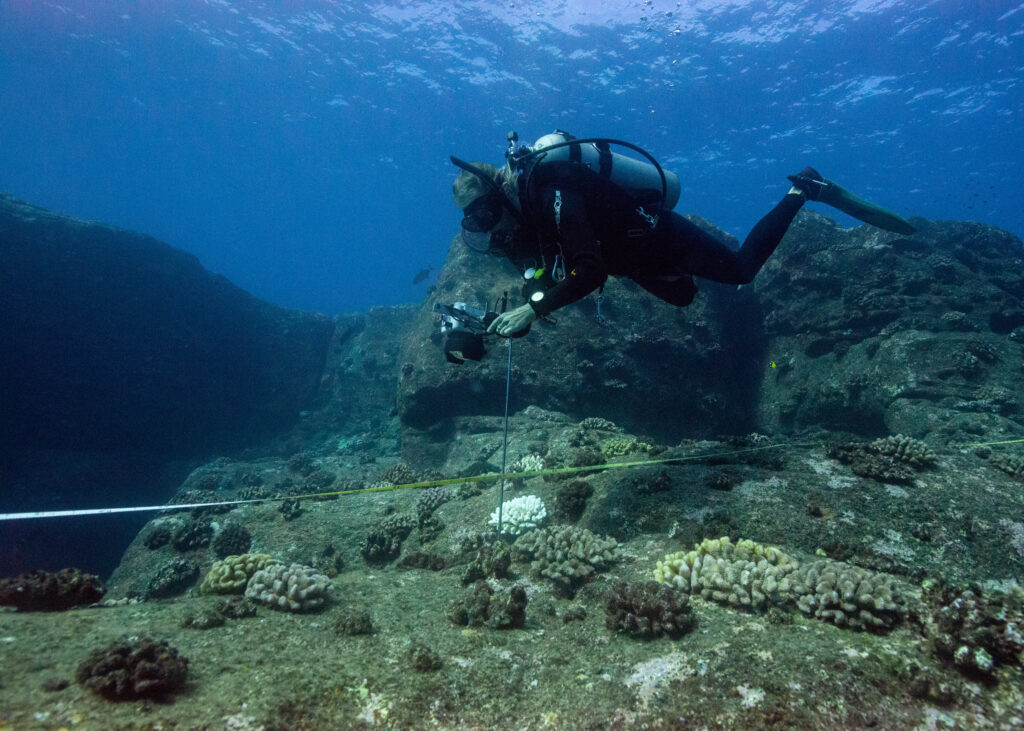
Kelly Moore takes benthic photos along the transect line of one of our survey sites. The long rod attached to the camera ensures that there is a standardized distance between the camera lens and the benthic substrate.
A number of people had expressed their excitement when they heard I would be working with Kelly. It took me very little time with her to realize that she is a powerhouse of a worker and a wonderful, genuine person. Our other team member, Glauco, is a jack of all trades who was constantly darting between dive ops, helicopter ops, visiting the patients in the care home, and helping with whatever odd things came up around the settlement. For such a small team, they got things done. They had a good rhythm — ideal when your team is normally only two people strong. I was eager to help, but their routine was so dialed in that it was initially challenging to know how to best assist. As the days progressed, we developed a steady flow to each morning. We’d load survey and dive equipment into the truck, make the necessary calls to initiate our dive plan and confirm that the hyperbaric chamber nearby was operational, and sit down for a group discussion and safety briefing.
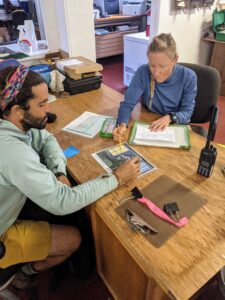
Glauco and Kelly go over dive sites and operation plans in the morning.
The isolated nature of Kalaupapa impacts every aspect of daily operations in the park, especially when dive operations are ongoing. Safety briefings are part of any NPS dive operation, but they were especially detailed in Kalaupapa, and for good reason. There are no medical services on-site, little cell service, and very few, if any, other boaters in the nearby waters. If anything were to happen while we were out, we would have to depend primarily on radio communication, which isn’t 100% reliable in the area.
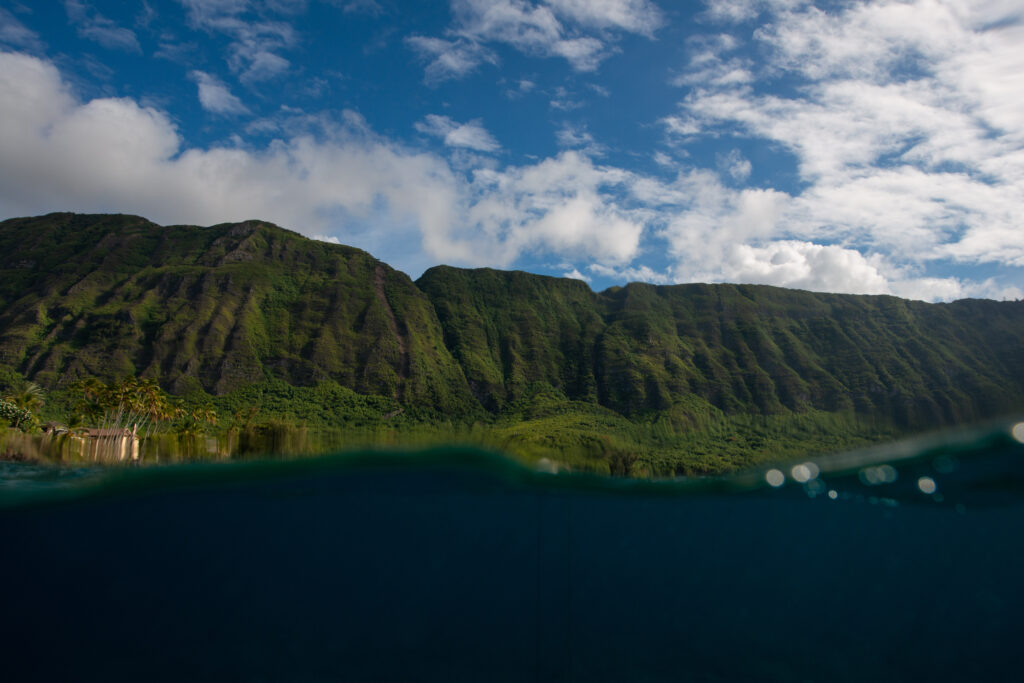
The steep sea cliffs towering over the settlement don’t exactly help when you’re trying to get cell service in Kalaupapa.
Once we talked through all things safety-related and confirmed that we were feeling good to dive, we drove down to the wharf where the NPS boat was moored. Because of the frequent swell and wave action, it usually wasn’t possible to tie up to the wharf without seriously risking damage to the boat. The best alternative was mooring the boat farther out in the water. This also meant taking an early morning plunge and swimming out to the boat, then driving it up to the wharf to load our gear. On particularly “swelly” days, we used large bins to float equipment out to the boat, pushing them in front of us as we swam. It sounds a bit ridiculous (and looked very ridiculous), but the NPS boat was to be protected at all costs!
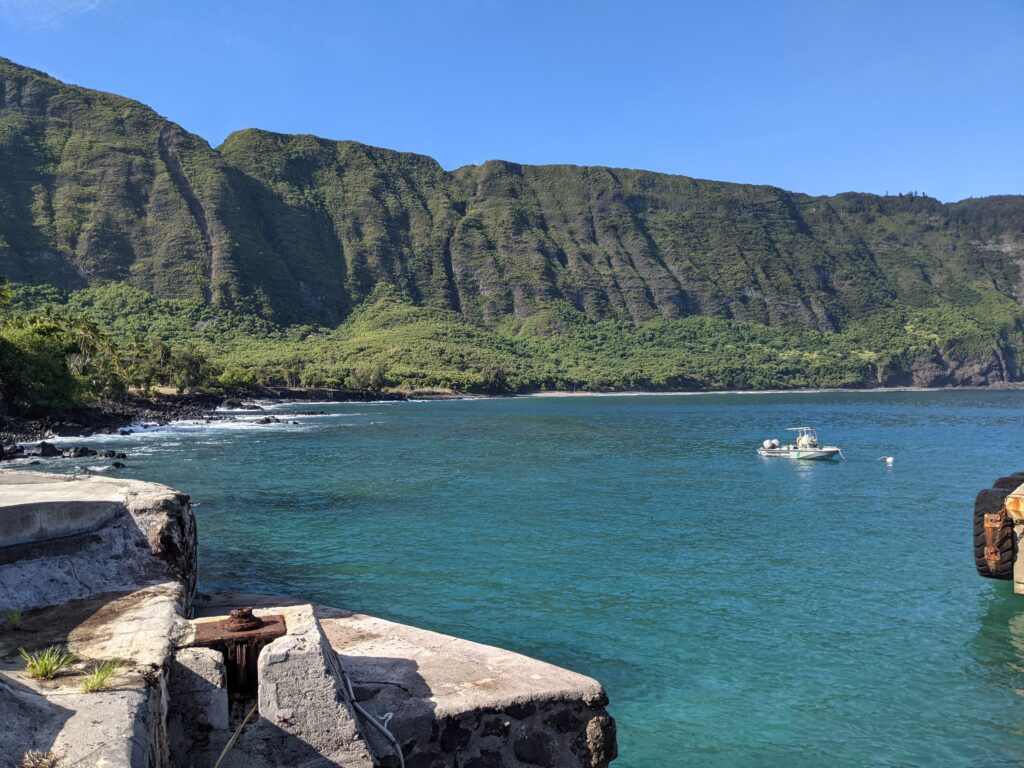
The NPS has one boat in Kalaupapa NHP. It is treated like royalty! In such a remote area, it’s critically important to take good care of what you have — you don’t know how long it’ll take to get a replacement if something breaks.
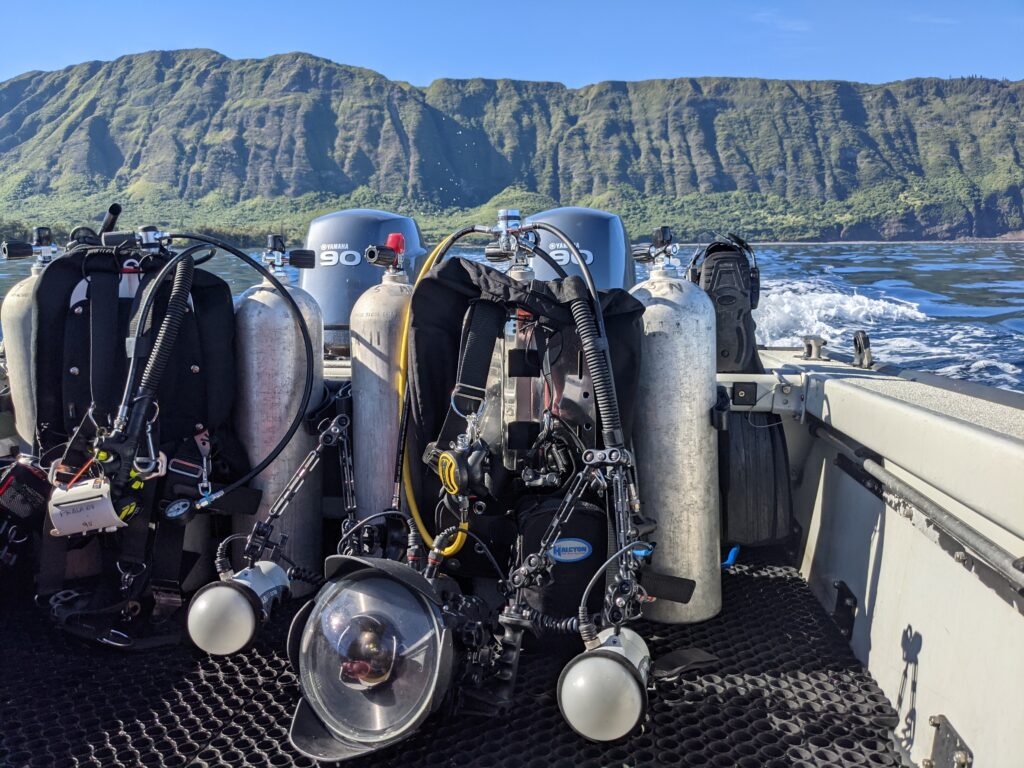
Gear set up and ready to go on the boat — and with a stunning view in the background.
Before Kalaupapa, I had never been diving in the North Pacific. Honestly, I hadn’t done much diving in water below 80 degrees (I’m spoiled, I know). After our first day of surveys, I learned that staying warm throughout a day of Kalaupapa diving meant layering up with a long sleeve rash guard and leggings, a 5 mm wetsuit, and a hood. It was chilly, yes, but I welcomed the new dive experiences. After months of diving in the Caribbean, I was surprised to see so many different fish species and such a vastly different underwater environment. The seafloor was composed primarily of bedrock and massive boulders, along with scattered cauliflower and antler corals. Unicornfish, trumpetfish, and bright yellow tangs caught my eye as we worked underwater. I couldn’t help but feel thankful that I didn’t have to identify, count, and measure each one. As much as I enjoyed all the Caribbean fish surveys I’d done earlier in the summer, I greatly appreciated the change of pace.
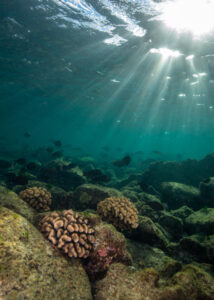
A batch of colorful cauliflower coral in the light.
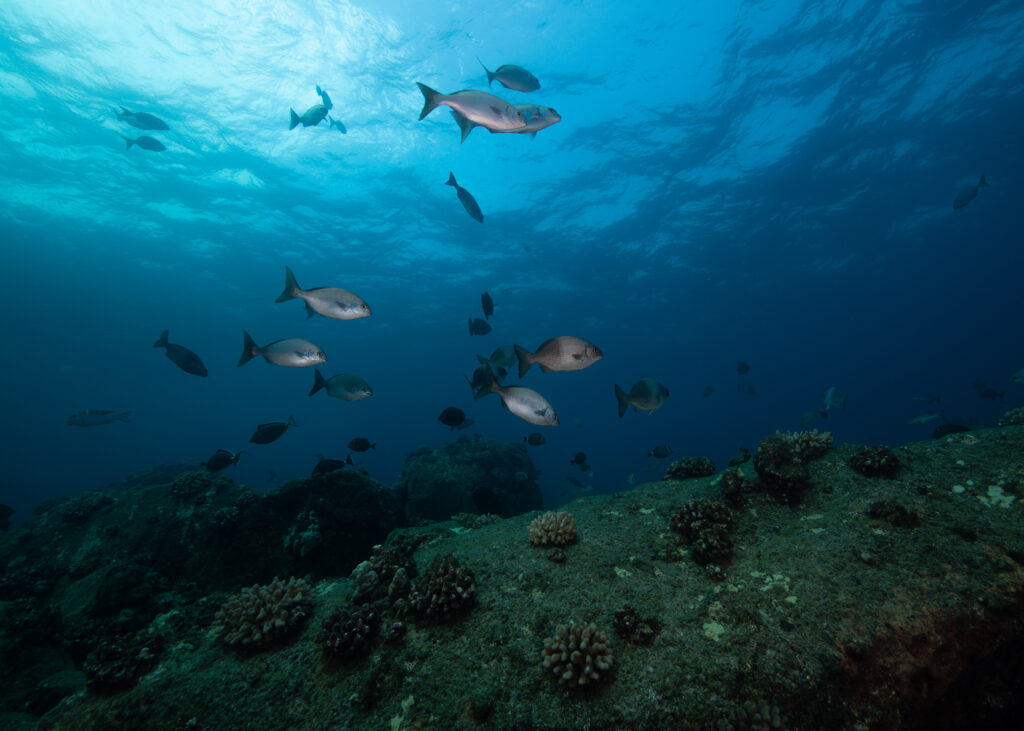
A small school of chubs — “nenue” in Hawaiian — swim by. Sometimes you’ll see a bright yellow chub intermixed with the grey ones — the result of a recessive trait. Hawaiians believe the rare yellow chubs (referred to as queen nenue) are good luck.
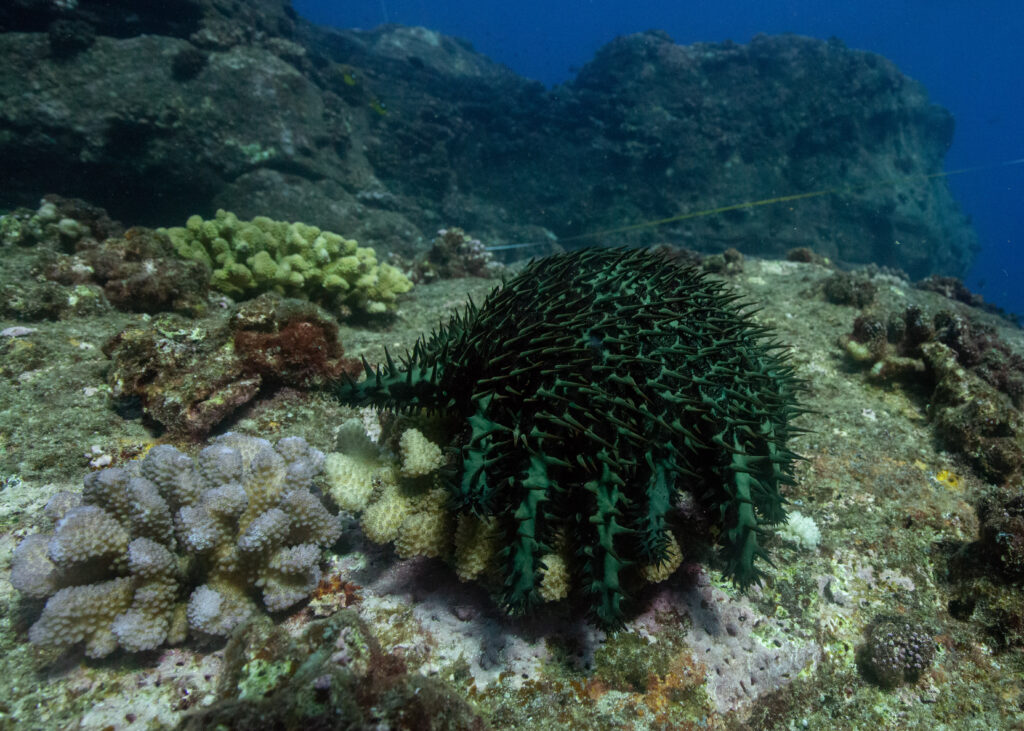
A Crown-of-Thorns starfish overtakes a cauliflower coral.

The scenery both above and below water was absolutely amazing in Kalaupapa.
—
When we weren’t diving, Kelly and Glauco were eager to help me feel at home and show me all that Kalaupapa had to offer. There weren’t many people around and we were certainly isolated, but there was a strong sense of community in the tiny settlement. By my second day, my fridge was stocked with groceries and freshly picked fruit from Kelly and a large bag of deliciously marinated venison from Glauco (the deer on the settlement are an invasive species, so the community consumes the by-products of permitted animal control efforts). In the evenings, people would get together for walks on the beach, snorkeling, or volleyball. Covid made it slightly more difficult to do things in groups, but everyone seemed to find a way to stay connected and keep spirits up.
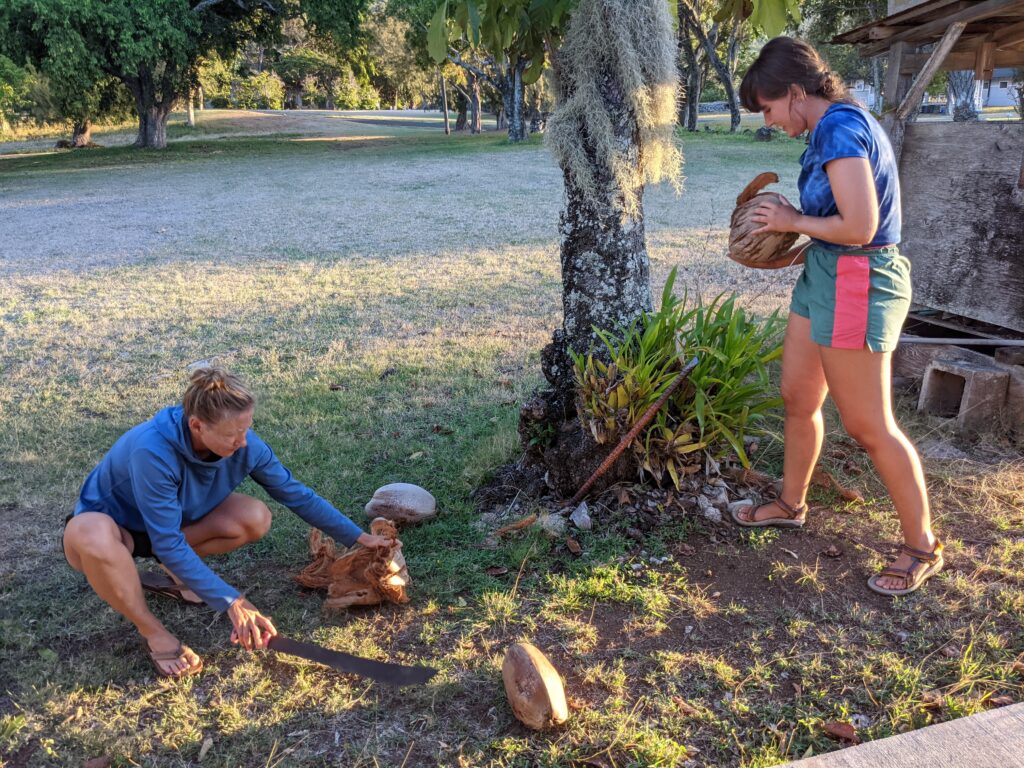
An evening past time: cracking coconuts! Kelly (left) uses a machete to whack off the outer husk, and Sydney (right) stabs the coconut onto a rebar pole in the ground to pry off the rest of the shell.

Getting to the actual coconut is not an easy task!
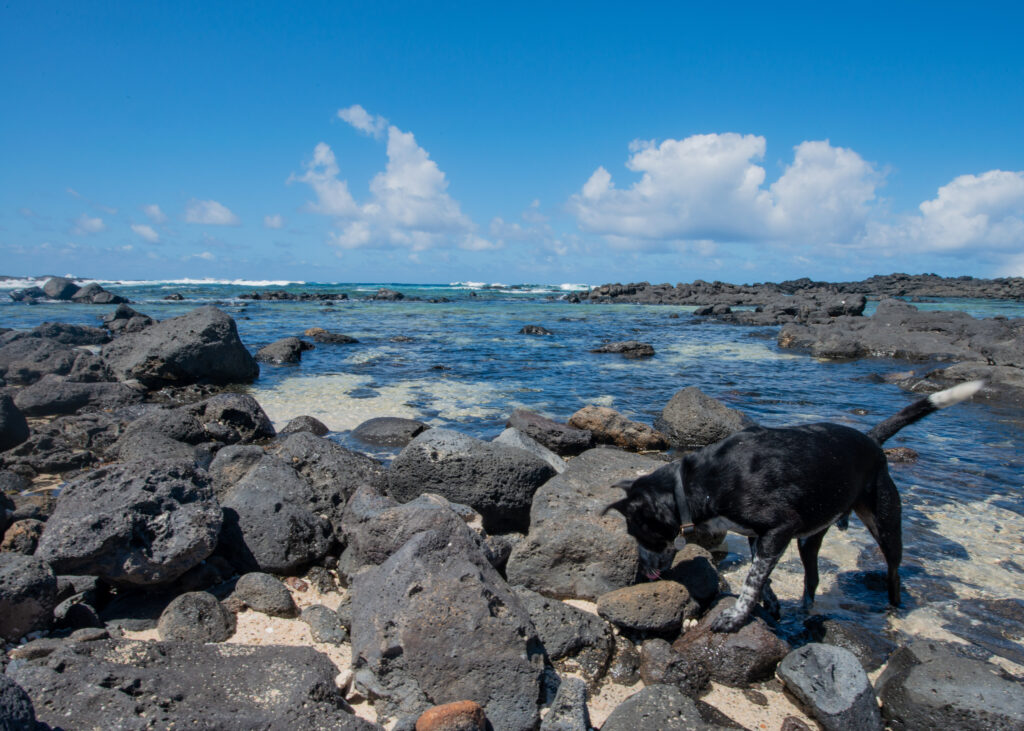
Another Kalaupapa activity: exploring the other side of the peninsula with Kelly and her water-loving dog, Thule.
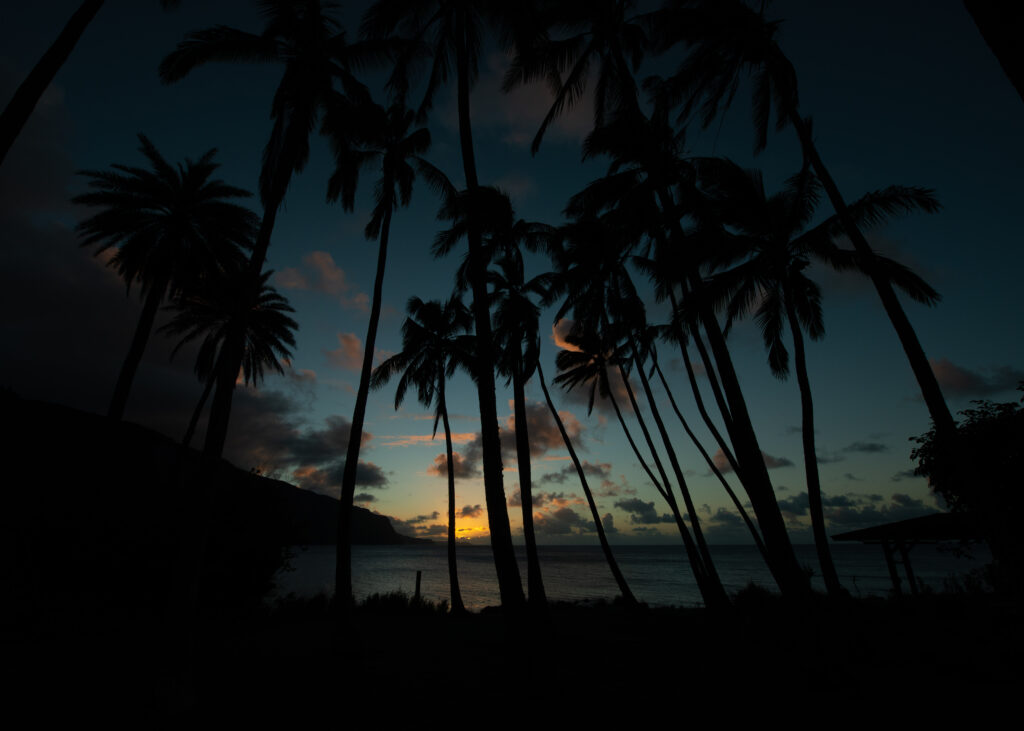
I did my best to watch the sunset every evening.
As I adjusted to my new environment, I found myself constantly thinking of Kalaupapa’s storied history. It’s impossible to ignore when you’re there. Cemeteries, monuments, and memorials dispersed throughout the settlement encourage one to take a pause and think about the significance of the area. As Kelly pointed out during one of our evening hikes, the isolation of being in Kalaupapa during Covid could be difficult at times. But, it was incomparable to what the thousands of leprosy patients before us experienced. Each day, whether I was watching the sunset on the beach or enjoying the stunning views of the lush green cliffside, I appreciated the fact that I was in the patch of Hawaiian paradise by choice — a luxury that so many before me were not afforded. Curious to continue learning about and experiencing the park, I prepared for my next Kalaupapa adventure: freshwater stream surveys in Waikolu Valley.
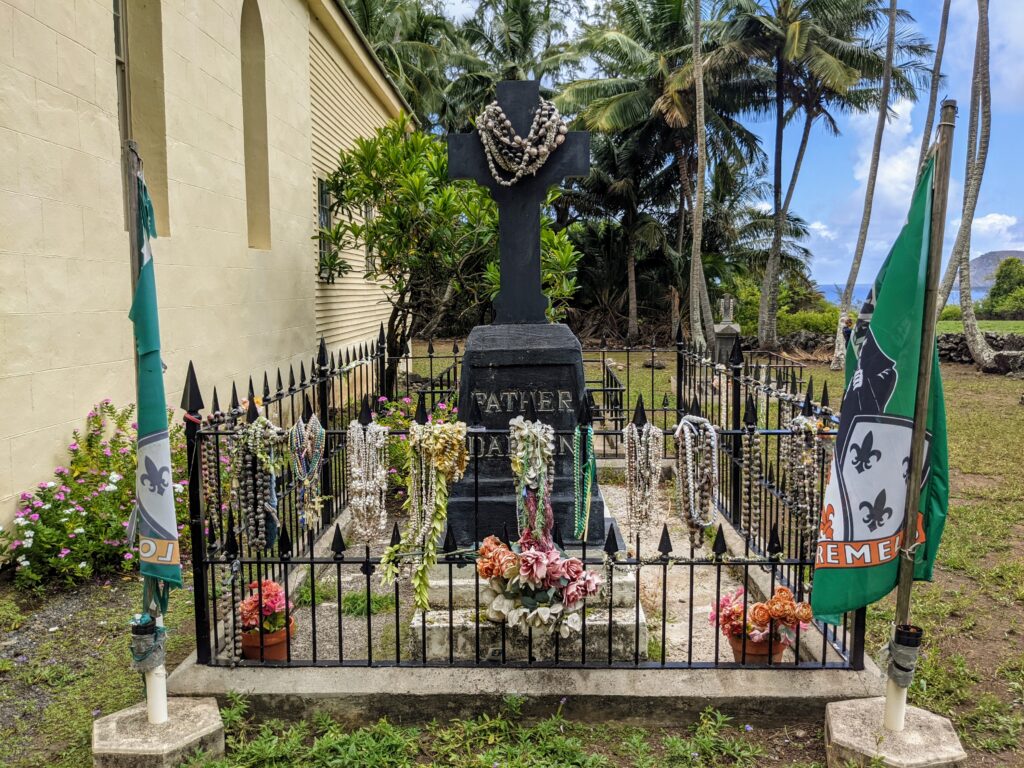
Father Damien is known for his dedication and devotion to the patients on Kalaupapa. He arrived on the island in 1873 and built houses, planted trees, organized schools, and most of all, provided hope, care, and support to those exiled to the remote peninsula.
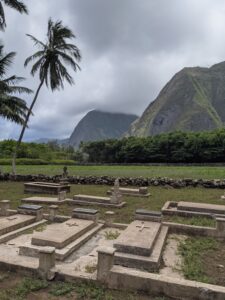
A number of cemeteries have been established around the peninsula.


Nicely done Sarah, interesting and presented with very good images that are much improved, you are developing a good eye for underwater imaging. I enjoyed your experiences in a beautiful place not many are privileged to see, thanks for sharing.
Thanks so much for the kind words. It has been such an amazing experience to not only work with the camera, but to do so in such incredible places. Glad you enjoyed!